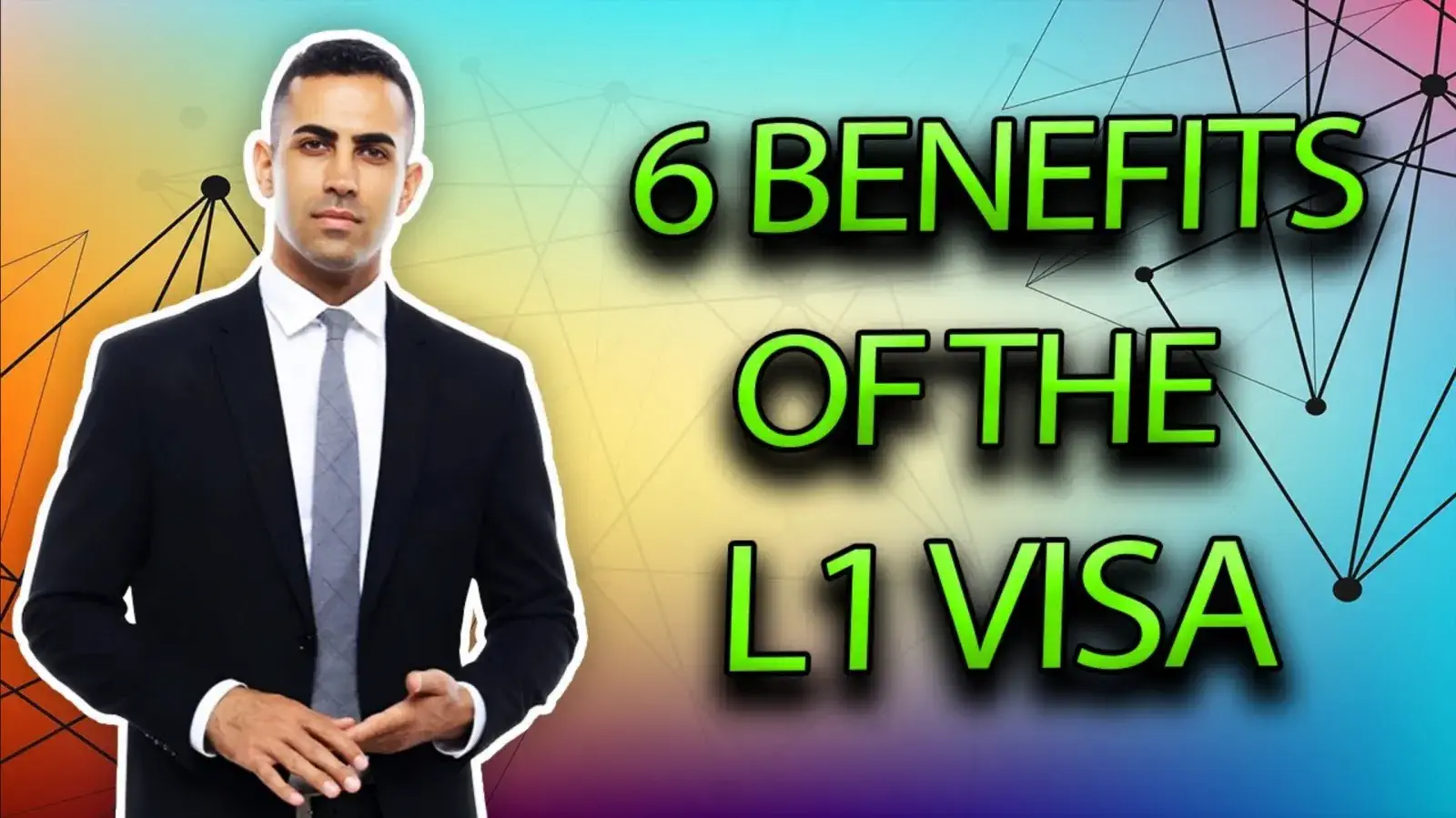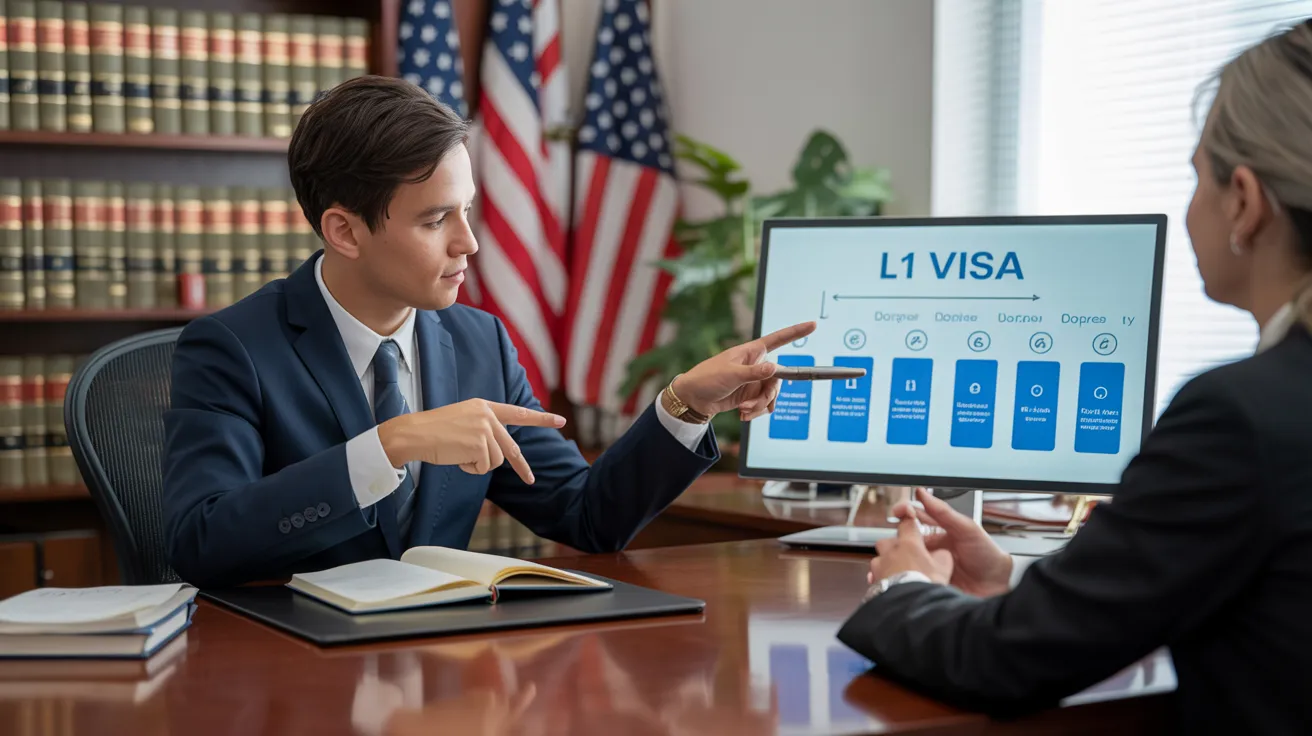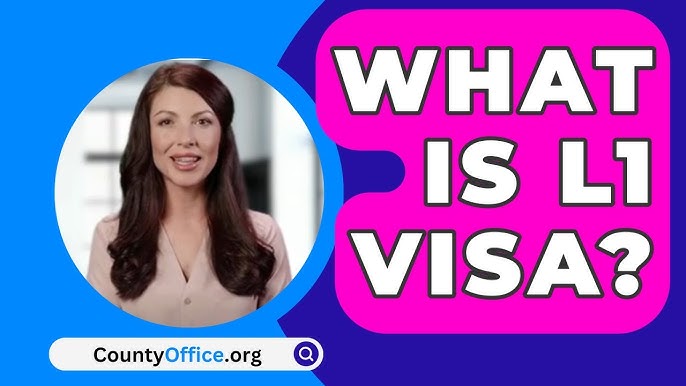Opening Opportunities: A Comprehensive Overview to the L1 Visa Process
The L1 visa process offers a vital path for multinational firms looking for to transfer vital workers across boundaries. Comprehending the subtleties of qualification criteria, the distinctions in between L-1A and L-1B visas, and the intricacies of the application procedure can significantly affect a candidate's success. Nevertheless, navigating this facility landscape is not without its challenges, and cautious attention to paperwork and company sponsorship is vital. As we discover the crucial parts of this process, the techniques for conquering possible obstacles will certainly become evident, exposing just how notified preparation can open a globe of opportunities.
Understanding the L1 Visa
Recognizing the L1 visa entails acknowledging its relevance as an important device for multinational companies seeking to move experienced workers between worldwide offices. This non-immigrant visa classification facilitates the activity of execs, supervisors, and specialized understanding workers to the USA, therefore making it possible for companies to preserve functional continuity and harness international ability efficiently. The L1 visa is divided right into two primary categories: L-1A for supervisors and execs, and L-1B for employees having specialized knowledge.The L1 visa serves an important role in enhancing a company's affordable side in the worldwide marketplace - L1 Visa. By enabling business to move their key personnel, organizations can guarantee that important projects are managed by certified people that are already accustomed to the firm's culture and functional processes. This internal transfer device not only fosters expertise sharing yet likewise advertises innovation and collaboration throughout borders.Moreover, the L1 visa is usually preferred for its fairly straightforward application procedure compared to various other visa categories, as it permits for double intent, allowing owners to go after long-term residency while on a short-term job visa. This function makes the L1 visa particularly appealing for both companies and staff members, as it enhances the pathway for proficient experts to develop lasting residency in the USA
Qualification Criteria
Eligibility for the L1 visa depends upon numerous essential standards that guarantee both the staff member and the employer fulfill specific qualifications. This non-immigrant visa is made for multinational business to transfer workers from consular services to U.S. counterparts.Firstly, the employer should be a qualifying company, that includes a moms and dad firm, branch, affiliate, or subsidiary of an U.S. business. The firm needs to have been doing organization for at least one year both in the U.S. and abroad. This guarantees that the business has sufficient functional stability and a legit presence.Secondly, the employee should hold a supervisory, exec, or specialized expertise position. For L1A visas, the applicant should show supervisory or executive certifications, while L1B visas concentrate on specialized understanding associated to the organization's items, solutions, or procedures. In addition, the staff member needs to have worked for the international entity for a minimum of one constant year within the last three years prior to their application.Lastly, the employee's role in the united state have to line up with their previous position, making sure that their abilities and proficiency are leveraged for the firm's benefit.
Kinds Of L1 Visas
The L1 visa group consists of 2 primary types designed to promote the transfer of workers within international business: the L1A visa for managers and executives, and the L1B visa for staff members with specialized expertise. Each type serves distinctive purposes and has certain qualification criteria.The L1A visa is customized for people who hold supervisory or executive settings within a firm. This visa enables high-level workers to transfer to a united state branch, subsidiary, or associate of the very same company. Candidates for the L1A visa should demonstrate that they have been employed in a supervisory or executive capacity for at the very least one continual year within the previous three years before their application. In addition, this visa supplies a longer period of stay, originally approved for 3 years, with the opportunity of expansions for as much as 7 years.In comparison, the L1B visa is meant for experts with specialized expertise pertaining to the firm's products, services, or processes. To certify, applicants need to confirm that their proficiency is important to the company which they have actually benefited at the very least one continual year within the last three years in a duty that required this specialized expertise. The L1B visa is initially approved for 3 years, with expansions available for approximately 5 years.Both visa kinds are important for firms looking for to boost their international operations by leveraging experienced workers, consequently promoting innovation and performance within the U.S. market.
Application Process
Guiding via the L1 copyright procedure includes a number of essential steps that have to be meticulously followed to guarantee a successful result. The procedure begins with the united state employer, who should first develop eligibility by showing a certifying connection with the foreign entity and validating that the staff member satisfies the details requirements for the L1 visa classification being sought.Once qualification is validated, the employer starts the procedure by submitting Kind I-129, the Application for a Nonimmigrant Worker, with the United State Citizenship and Migration Solutions (USCIS) This form has to be gone along with by a detailed summary of the work duties to be executed, the business framework of both the U.S. and international entities, and the staff member's credentials. It's crucial to verify that all details is precise and complete, as noninclusions or inaccuracies can lead to hold-ups or denials.Upon authorization of the I-129 request, the following action includes the staff member looking for the L1 visa at an U.S. consular office or consulate in their home nation. This phase needs the conclusion of Form DS-160, the Online Nonimmigrant copyright, and scheduling an interview. During the meeting, the candidate must provide proof supporting their credentials and the employer's petition.After the visa is granted, the worker can go into the USA to operate in the marked role. In general, mindful prep work and adherence to every step of the application process are essential for a successful L1 visa end result.
Called for Documents

Vital Types Needed
Navigating the L1 Visa procedure calls for careful attention to the crucial forms and documents necessary for a successful application. The key type needed is the Type I-129, Request for a Nonimmigrant Worker, which must be completed and submitted by the united state employer. This type lays out the details of the employment deal and the certifications of the worker looking for the L1 Visa.Alongside Kind I-129, the applicant will certainly need to total Kind I-539 if coming with household members are additionally looking for visas. Furthermore, the company must give proof of the certifying relationship in between the united state entity and the foreign entity, typically demanding the entry of business records such as write-ups of unification or financial statements.Moreover, it is crucial to consist of the L Category Supplement to Type I-129, which defines the sort of L Visa being requested-- either L-1A for supervisors and executives or L-1B for workers with specialized expertise. Applicants ought to ensure that all types are signed and dated suitably, as insufficient submissions can lead to hold-ups or denials. Correctly putting together these crucial types lays the structure for a smoother L1 copyright procedure.

Supporting Proof Requirements
Supporting documentation is vital for a successful L1 copyright, as it substantiates the claims made in the application. Candidates should supply a range of papers to show qualification for the visa, which is classified into two main types: proof of the qualifying connection in between the U.S. and international entities and evidence of the applicant's qualifications.To develop the relationship, applicants need to send documents such as business business graphes, financial declarations, and proof of possession. These files validate that the international firm has a qualifying partnership with the united state company, whether as a parent company, subsidiary, branch, or affiliate.For the applicant's qualifications, important records consist of a comprehensive employment letter from the international company, outlining the candidate's job title, obligations, and duration of work. Additionally, instructional qualifications, such as levels and diplomas, need to be provided to show the candidate's proficiency in the relevant area.
Employer Sponsorship Files

Typical Obstacles
Navigating the L1 visa process provides a number of typical challenges that applicants ought to be aware of. Secret issues frequently consist of stringent paperwork needs, possible hold-ups in handling times, and the need for stringent lawful compliance. Recognizing these obstacles can aid applicants better prepare and reduce risks throughout their copyright journey.
Documentation Requirements
The L1 copyright process typically offers significant difficulties associated to documents needs. Applicants need to give considerable documentation to establish eligibility, which can lead to confusion and possible delays. Secret papers include proof of a certifying relationship between the U.S. and foreign employer, evidence of the applicant's employment background, and detailed information concerning the job duty in the U.S.One common obstacle is collecting sufficient proof to demonstrate the nature of the certifying partnership. Companies usually struggle to present clear business graphes or economic declarations that illustrate the connection in between the entities. Furthermore, guaranteeing that letters of support from employers properly reflect the candidate's task obligations and credentials is essential, as unclear descriptions can result in denials.Another concern emerges from the need for in-depth task descriptions that straighten with the L1 visa groups. Candidates have to express not only their existing function however also their managerial or customized understanding responsibilities clearly. This demands an extensive understanding of both the candidate's position and the governing language used in L1 applications.
Handling Time Delays
Experiencing hold-ups in processing times is a common challenge encountered by L1 visa applicants, often leading to irritation and unpredictability. Several elements contribute to these hold-ups, consisting of high application volumes, increased analysis of applications, and administrative stockpiles within the united state Citizenship and Immigration Provider (USCIS) Applicants may discover that processing times can differ greatly relying on the service facility managing their application, as each facility has its own workload and effectiveness degrees. Furthermore, the intricacy of the applicant's case, such as the requirement for extensive paperwork or information, can additionally expand wait times.In some circumstances, issues connected to the applicant's present migration condition or previous visa history might also cause extra hold-ups, as USCIS may call for further review or information. It is necessary for candidates to continue to be proactive throughout this duration, preserving open communication with their employers and lawful reps to address any kind of potential worries promptly.Understanding these handling time difficulties can aid L1 visa candidates prepare for possible delays and minimize the effect on their change and career plans. Persistence and diligence are vital merits in maneuvering this complex process.
Legal Compliance Issues
Many L1 visa applicants run into lawful conformity problems that can complicate their journey toward acquiring the visa. Comprehending and adhering to the specific regulations established by the united state Citizenship and Migration Provider (USCIS) is crucial. Usual obstacles consist of demonstrating the qualifying relationship in between the international and united state companies, as well as proving that the candidate has the requisite customized knowledge or supervisory capacity.Additionally, candidates need to supply comprehensive documentation detailing their job responsibilities, company structure, and financial practicality of the U.S. entity. Poor or unreliable documents can bring about delays or perhaps rejections. Employers should also assure that they conform with labor laws, including wage and working problem criteria, which can affect visa eligibility.Another common problem involves keeping compliance with the terms of the visa when provided. Modifications in employment standing, task obligations, or company framework can require amendments to the visa, which if not resolved quickly can lead to legal issues. Consequently, staying educated about conformity requirements and seeking lawful guidance when required is important to browse the intricacies of the L1 visa process successfully.
Tips for Success
Success in the L1 copyright procedure typically rests on thorough preparation and attention to information. To improve your chances of authorization, start by thoroughly understanding the eligibility needs for both the L1 Visa Qualifications L1A and L1B visa categories. Assess whether your placement at the business certifies as supervisory, exec, or specialized knowledge, as this classification significantly influences your application.Next, gather comprehensive paperwork that confirms your claims. This consists of organizational graphes, comprehensive work descriptions, and proof of the firm's operational framework. Clear and concise evidence of the qualifying partnership between the U.S. entity and the international entity is essential. Confirm that all documents are organized practically and provided in a specialist manner, as this reflects your commitment and seriousness about the application.Engage the services of a knowledgeable immigration attorney who specializes in L1 visas. Their proficiency can show important, directing you with facility laws and ensuring that all documents abides with existing legislations. In addition, prepare for the interview by practicing answers to usual questions and being prepared to review your function and payments to the company in depth.
Frequently Asked Concerns
Can Family Members Accompany the L1 Visa Owner?
Yes, relative of L1 visa holders, including spouses and single children under 21, can come with the main visa holder. They may also apply for L2 visas, which enable them to live in the United States.
Just How Long Can I Stay on an L1 Visa?
The L1 visa permits first stays of up to 3 years, with the opportunity of expansion. L1A visa holders may stay for a maximum of 7 years, while L1B visa holders can continue to be for five years.
Can L1 Visa Owners Request an Eco-friendly Card?
Yes, L1 visa holders can request an eco-friendly card. L1 Visa Requirements. They might go after long-term residency with employment-based classifications, normally needing sponsorship from their company, offered they fulfill the required certifications and documentation demands
What Happens if My L1 copyright Is Rejected?
If your L1 copyright is refuted, you might obtain a notification detailing the reasons for rejection. You can seek to appeal the choice, reapply, or explore alternate visa alternatives based on your situations.
Exist Any Kind Of Traveling Limitations With an L1 Visa?
An L1 visa generally permits worldwide traveling; however, re-entry to the united state rests upon preserving valid status. Travelers should assure conformity with visa problems to stay clear of complications upon return
Final thought
